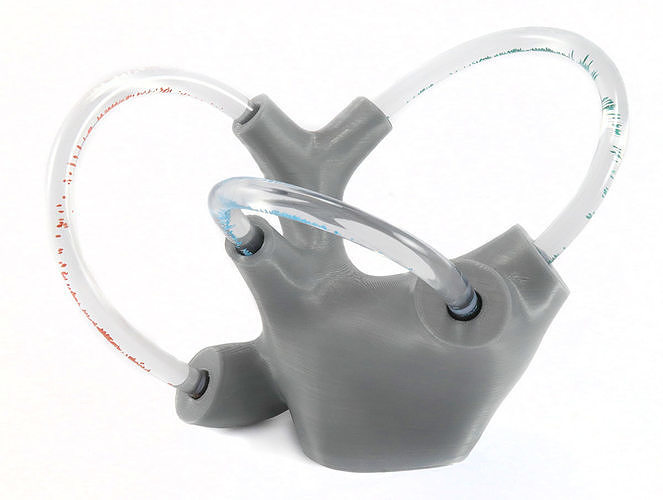
Fluid-Filled Vestibular Apparatus for Vertigo Education Free 3D print model
Learn how positional vertigo works by watching the crystals (aka otoconia or otolith) fall and move through the semicircular canals of your inner ear anatomy with this educational model. We developed this anatomical model to promote the understanding of fluid dynamics as well as how our inner ear crystals respond to gravity when displaced in the canals. This model can demonstrate how BPPV repositioning techniques such as the Epley work. Perfect for use with patients, students, and clinical mentorship and training.
Visit our website for a detailed tutorial to build a fluid-filled vestibular apparatus
https://vestibularfirst.com/how-to-make-a-fluid-filled-vestibular-apparatus/
Supplies needed:
- Crushed Green Malachite
- Crushed Turquoise
- Crushed Red Coral
- Baby Oil
- Clear Tubing
- Tubing Caps
- Adhesive Dots
- Mini Hot Glue Gun
If you're not a DIYer and want to support our mission of developing the most affordable and innovative vestibular technologies, you can purchase a pre-built fluid-filled vestibular apparatus on our website here: https://vestibularfirst.com/store/fluid-filled-vestibular-apparatus/



